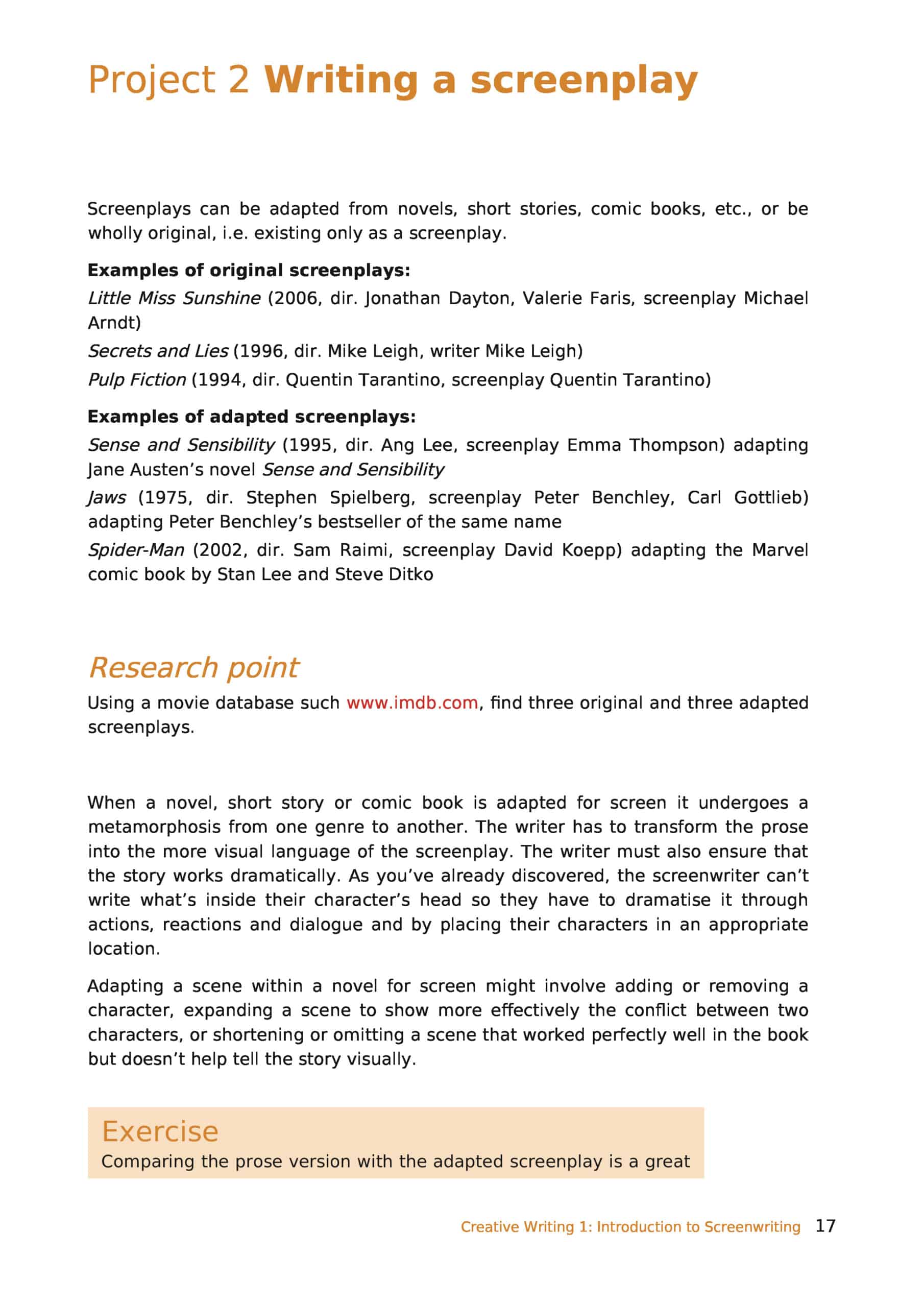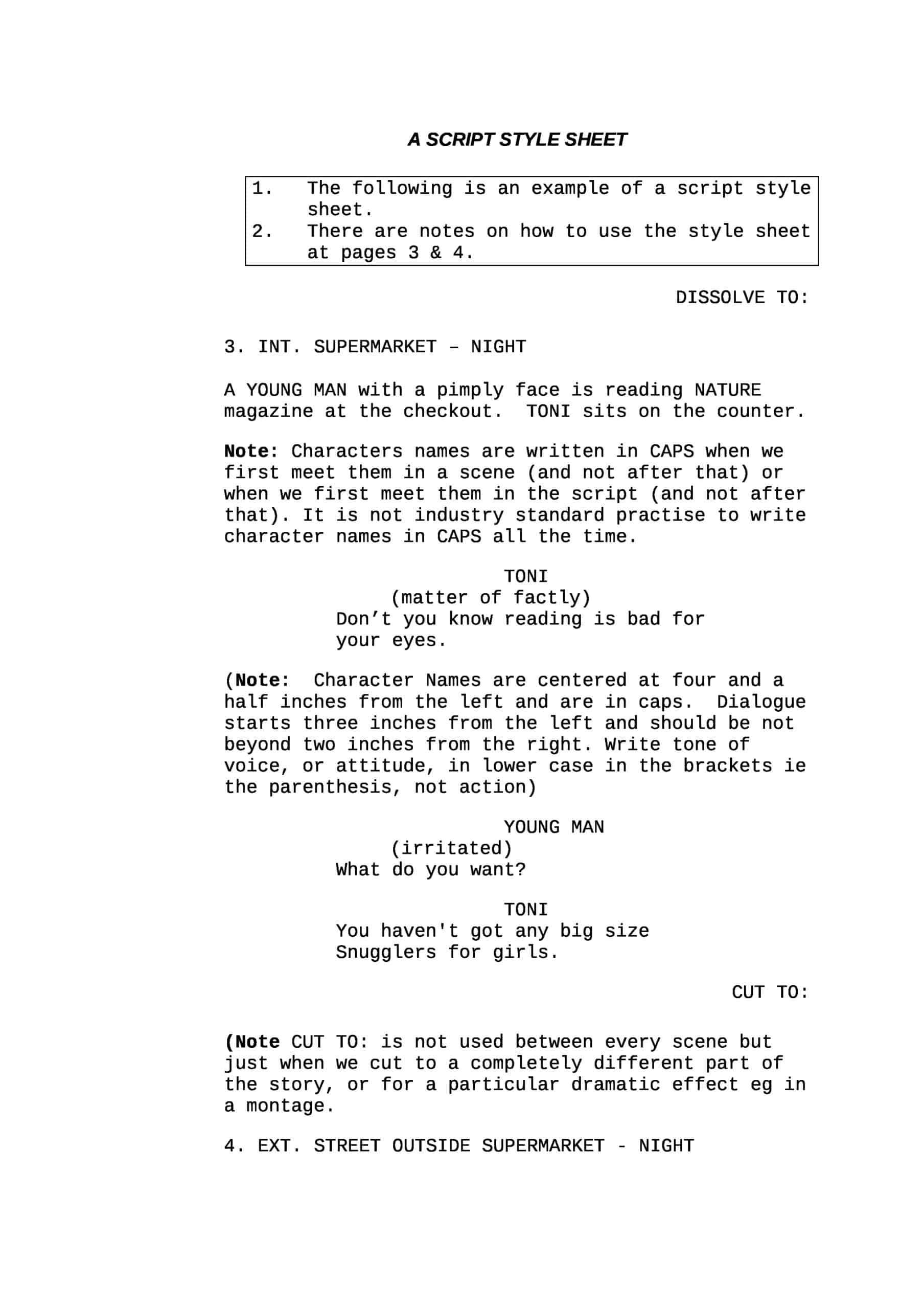A screenplay is the backbone of a movie, providing the foundation for a film’s visual and auditory elements. It’s a document that is closely examined by directors, producers, and other industry professionals, and it’s important that it is written with precision and attention to detail.
One crucial aspect of a screenplay is its formatting, including the use of the ideal font, Courier, which allows you to time sequences so that a single formatted page equals one minute of screen time. In this article, we will delve into the intricacies of using a Screenplay Template, including tips on formatting, character development, and pacing to help you create a compelling and professional screenplay.
Table of Contents
Screenplay Templates
Screenplay Templates are pre-designed formats used by screenwriters to structure and organize their scripts for film, television, or other visual media. These templates provide a standardized framework for formatting and presenting the screenplay, ensuring consistency, clarity, and industry standards in scriptwriting.
Screenplay Templates include specific elements and formatting guidelines that allow screenwriters to effectively communicate their story, dialogue, action, and visual descriptions to directors, producers, and other industry professionals.
Screenplay Templates offer a standardized and efficient approach to writing scripts for film, television, or other visual media. By using these templates, screenwriters can focus on storytelling and creative expression while adhering to industry standards and expectations.
These templates facilitate clear and concise communication of the story, characters, and dialogue, enabling collaboration and understanding among industry professionals. Screenplay Templates serve as valuable tools in scriptwriting, helping screenwriters bring their visions to life and communicate their stories effectively to directors, producers, and other stakeholders involved in the production process.
What Is a Screenplay Template?

A screenplay template is a pre-formatted document that provides a standardized structure and layout for writing a screenplay. It includes guidelines for the various elements that make up a screenplay, such as character names, scene headings, dialogue, and action descriptions.
Key elements of a screenplay template
A screenplay template typically includes several key elements, which are necessary for the screenplay to be written in the proper format and follow industry standards. These elements include:
Scene Headings: Also known as “sluglines,” these provide the location and time of day for each scene. They are usually written in uppercase letters and include the type of location (INT. or EXT.) and the specific location (e.g. INT. KITCHEN – DAY).
Action Descriptions: Also known as “direction,” this is a detailed description of what is happening in a scene, including the characters’ actions and the visual elements of the scene.
Character Names: Characters’ names are typically written in uppercase letters and are placed in the center of the page, above their dialogue.
Dialogue: This is the spoken lines of the characters. It is typically written in lowercase letters and is indented from the left margin.
Parentheticals: These are short descriptions of a character’s actions or emotions that are included within the dialogue. They are written in lowercase letters and are placed in parentheses.
Transitions: These are used to indicate a change in time, location or point of view. They are typically written in uppercase letters and are placed at the left margin.
Camera Directions: These are used to indicate camera shots and movements. They are typically written in lowercase letters and are placed within the action descriptions.
Sound Effects: These are used to indicate sound effects that will be heard in the scene. They are typically written in uppercase letters and are placed within the action descriptions.
Formatting: A screenplay template also includes guidelines for formatting elements such as font, spacing, and margins. The standard font used in the film industry is the Courier font, as it allows you to time sequences so that a single formatted page equals one minute of screen time.
Notes and Comments: Some screenplay templates include a section for notes or comments, which can be used to add notes or suggestions for the director, producer, or other industry professionals.
How to Write a Screenplay
Follow the industry standard format: It’s important to use the correct format when writing a screenplay, as it makes it easier for directors, producers, and other industry professionals to read and understand. A screenplay template can help you to ensure that your screenplay is written in the proper format.
Use the active voice: Use the active voice when writing action descriptions and avoid using passive voice. This helps to make the screenplay more dynamic and engaging.
Show, don’t tell: Instead of describing what a character is feeling or thinking, show it through their actions and dialogue. This helps to make the characters more relatable and believable.
Use visual storytelling: A screenplay is a visual medium, so it’s important to use descriptive language that helps the reader to envision the scene and the characters.
Keep it simple: Avoid using overly complex language or convoluted sentence structures. Keep the screenplay easy to read and understand.
Write for the screen: A screenplay is meant to be translated to the screen, so write in a way that makes it easy to envision how the story will play out on film.
Avoid camera directions: The job of a screenplay is to tell a story, not to direct the camera. Camera direction should be left to the director and the director of photography.
Be consistent: Be consistent with character names, scene headings, and formatting throughout the screenplay.
Read and revise: As you write, read through your screenplay and make revisions as needed. A screenplay is a work in progress and will likely require multiple drafts before it’s ready to be submitted.
Get feedback: Seek feedback from others and consider their suggestions as you revise your screenplay.
Screenplay vs. script: What’s the difference?
A screenplay and a script are often used interchangeably, but they have some key differences.
A screenplay is a written work that is specifically created for the medium of film. It includes visual descriptions, dialogue, and character development, and is meant to be a blueprint for the final film. Screenplays follow a specific format, which includes scene headings, action descriptions, character names, and dialogue, and are written in the present tense.
A script, on the other hand, is a general term used to refer to any written work for a performance or production, whether it’s for film, television, theater, or radio. Scripts can include plays, teleplays, and radio dramas, and may not always follow the same format as a screenplay.
In short, a screenplay is a specific type of script that is written for the medium of film. It’s meant to provide a blueprint for a film, while a script can refer to any written work for a performance or production.
FAQs
What is the standard format for a screenplay?
The standard format for a screenplay includes scene headings, action descriptions, character names, and dialogue. It also includes guidelines for formatting elements such as font, spacing, and margins. The standard font used in the film industry is the Courier font, as it allows you to time sequences so that a single formatted page equals one minute of screen time.
How long should a screenplay be?
A typical feature-length screenplay is around 110-120 pages, although this can vary depending on the genre and the specific story being told.
How can I get feedback on my screenplay?
One way to get feedback on your screenplay is to share it with other writers or industry professionals. You can also join a writer’s group or workshop, which can provide feedback on your screenplay.
How do I submit my screenplay?
To submit your screenplay, you can approach production companies, agents, or film festivals that accept submissions. You can also submit your screenplay to script competitions or pitch it at networking events. It’s important to research the submission guidelines and requirements of the company or organization you are submitting to.
Can I sell my screenplay?
Yes, it’s possible to sell your screenplay, but it can be a challenging and competitive process. You may need to have a strong portfolio of work, a solid understanding of the industry, and strong networking skills.
How much can I expect to make from a screenplay?
The amount of money you can make from a screenplay varies greatly depending on the project and the level of success it achieves. For example, a screenwriter for a major Hollywood film can make millions of dollars, while a screenwriter for an independent film may make only a few thousand dollars.
What is a shooting script?
A shooting script is a version of the screenplay that has been fine-tuned and approved for production. It includes final revisions, notes from the director, and any other changes that have been made since the initial draft of the screenplay.
How do I protect my screenplay?
One way to protect your screenplay is to register it with the Writer’s Guild of America. You can also copyright your screenplay and include a disclaimer on the cover page. Additionally, be careful about sharing your screenplay with others, and consider having them sign a non-disclosure agreement before reading it.









































![Free Printable Roommate Agreement Templates [Word, PDF] 1 Roommate Agreement](https://www.typecalendar.com/wp-content/uploads/2023/06/Roommate-Agreement-150x150.jpg)
![Free Printable Credit Card Authorization Form Templates [PDF, Word, Excel] 2 Credit Card Authorization Form](https://www.typecalendar.com/wp-content/uploads/2023/06/Credit-Card-Authorization-Form-150x150.jpg)
![Free Printable Stock Ledger Templates [Excel,PDF, Word] 3 Stock Ledger](https://www.typecalendar.com/wp-content/uploads/2023/08/Stock-Ledger-150x150.jpg)
